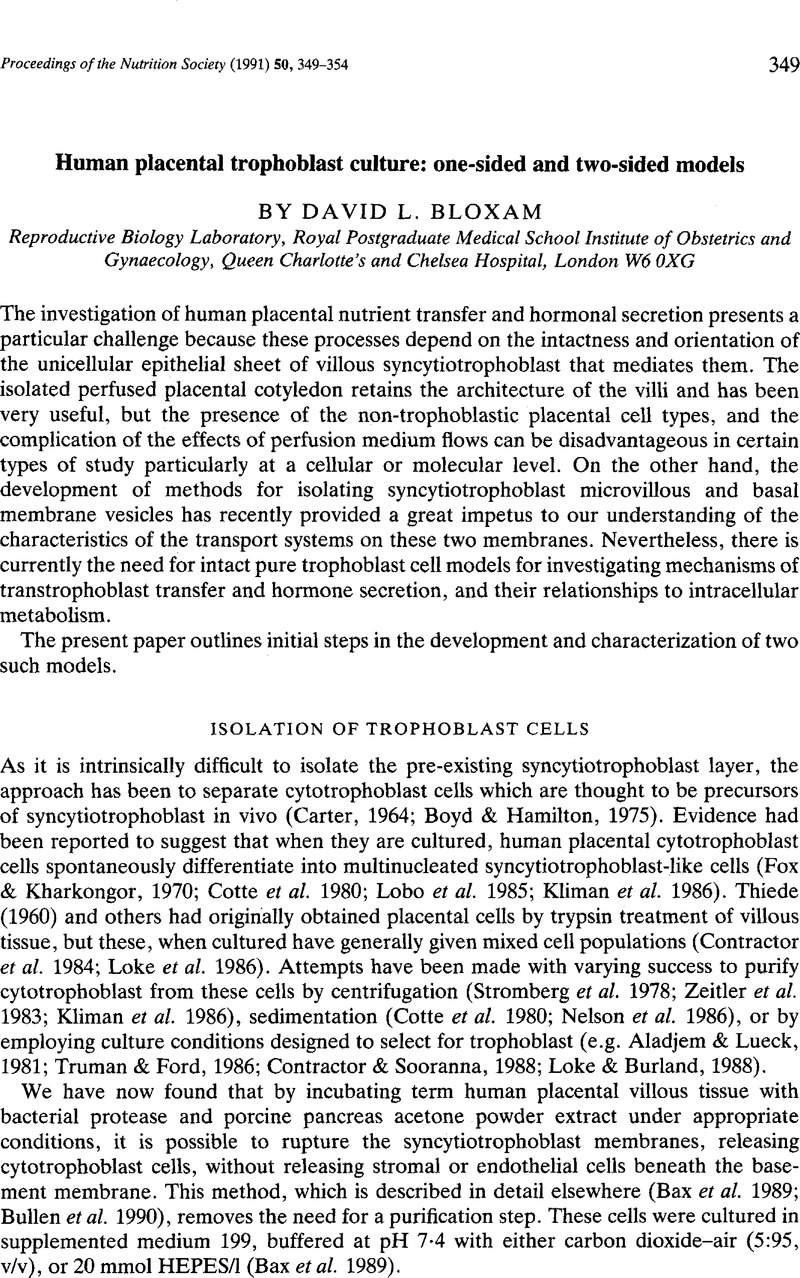Crossref Citations
This article has been cited by the following publications. This list is generated based on data provided by Crossref.
Bax, Christopher M. R.
and
Bloxam, David L.
1995.
Two major pathways of zinc(II) acquisition by human placental syncytiotrophoblast.
Journal of Cellular Physiology,
Vol. 164,
Issue. 3,
p.
546.
Ma, Teng
Yang, Shang-Tian
and
Kniss, Douglas A.
1999.
Development of anin VitroHuman Placenta Model by the Cultivation of Human Trophoblasts in a Fiber-Based Bioreactor System.
Tissue Engineering,
Vol. 5,
Issue. 2,
p.
91.
Behravan, Javad
and
Piquette-Miller, Micheline
2007.
Drug transport across the placenta, role of the ABC drug efflux transporters.
Expert Opinion on Drug Metabolism & Toxicology,
Vol. 3,
Issue. 6,
p.
819.
Levkovitz, R.
Zaretsky, U.
Gordon, Z.
Jaffa, A.J.
and
Elad, D.
2013.
In vitro simulation of placental transport: Part I. Biological model of the placental barrier.
Placenta,
Vol. 34,
Issue. 8,
p.
699.
Kreuder, Anna-Elisabeth
Bolaños-Rosales, Aramis
Palmer, Christopher
Thomas, Alexander
Geiger, Michel-Andreas
Lam, Tobias
Amler, Anna-Klara
Markert, Udo R.
Lauster, Roland
and
Kloke, Lutz
2020.
Inspired by the human placenta: a novel 3D bioprinted membrane system to create barrier models.
Scientific Reports,
Vol. 10,
Issue. 1,



